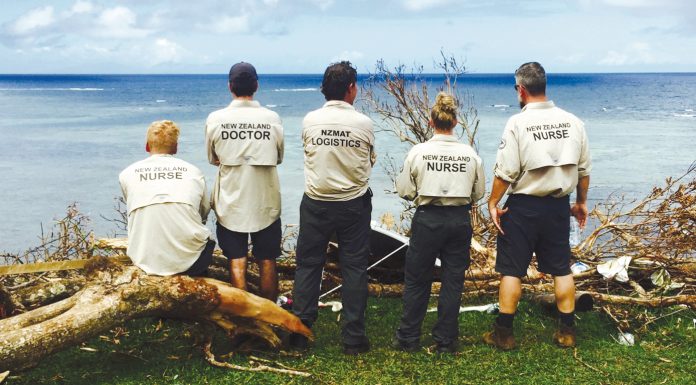There’s a big difference between empathy and sympathy, but often we get them confused, says Tracy Levett-Jones.
“While empathy and sympathy are both reactions to the plight of another person, sympathy is just a feeling of pity for their misfortune. Empathy is like walking a mile in someone else’s shoes; sympathy is just being sorry that their feet hurt.”
Levett-Jones, Professor of Nursing Education at the University of Technology, Sydney (UTS), addressed the recent Australasian Nurse Educators Conference on why empathy still matters to nurses and the patients they care for, and how her research shows that empathy should – and can – be taught.
The three levels of empathy
Levett-Jones explains that there are three levels of empathy and some levels come more easily than others.
The first level is affective empathy, which is the easiest form of empathy as nearly everybody, except narcissists, is hardwired to feel empathy for misfortunes they can relate to – particularly if the person suffering that misfortune is similar in sex, age, nationality or ethnicity to themselves.
The next level is cognitive empathy, which requires more than the empathetic imagination necessary for affective empathy, as it requires empathetic intelligence to attempt to see the world through another person’s eyes.
Levett-Jones says cognitive empathy also requires a non-judgmental stance, which is a challenge to everybody, but particularly for nurses. “I’m a proud nurse, but I’ve also sat in many handovers when nurses have made judgmental statements like: ‘[That’s just] drug-seeking behaviour’ and ‘They are just a whinger’.
“If we could look into each other’s eyes and understand the unique challenges that each of us faces, we would treat each other with much more empathy, patience, tolerance and care,” says Levett-Jones.
The third and highest level of empathy is behavioural empathy, which steps empathy up a further notch and requires effort, intelligence and deliberate practice to develop and communicate empathetic concern for another and a readiness to put that empathy into action. Levett-Jones says many regard behavioural empathy as being synonymous with compassion.
Empathy in decline
Interest in empathy has never been higher, with double the number of books written on the subject in the past five years than in the previous years, says Levett-Jones. Likewise, the number of web searches on the topic have tripled.
But while interest is high, research indicates that empathy itself is going through new lows, with Levett-Jones quoting one large retrospective study of American college students showing that empathy has declined by more than 40 per cent over the past 30 years, with the steepest decline being this century. Screens and social media are thought to be one possible cause of the decline, with young people spending increasing amounts of time reading and sending emoticons and emojis, rather than reading real faces.
Nursing and medicine is not immune to this decline, with a body of evidence showing that fresh-faced nursing and medical students’ empathy levels decline by up to 50 per cent from when they start their degrees to when they finish them. Levett-Jones says some of the reasons are believed to be prioritising technical and procedural skills over values like empathy, limited attention to teaching and assessing empathy skills, and students being desensitised and suffering compassion fatigue from being exposed to human suffering without appropriate preparation or support.
“We kind of got the hunch that if we threw nursing students into situations that obviously were intended to generate an empathic response, it would happen,” says Levett-Jones. “It actually doesn’t, as what happens is that students are in survival mode and they can shut off.”
Does empathy still matter?
Does it matter whether nurses are empathetic? Most definitely yes, believes Levett-Jones, with empathy being a key component of all therapeutic relationships. Demonstrating empathy is also seen as a key competency indicator by the Nursing Council of New Zealand.
Levett-Jones says there is compelling research that empathetic engagements with patients have a major impact – from decreasing levels of depression and distress, increasing adherence to treatment plans and improving physiological outcomes, from tissue healing to blood pressure. “What medication, technology or high-level medical intervention could influence all of those outcomes?” she says.
Research also indicates that having empathy is a plus for health professionals as it enhances their clinical reasoning ability and is linked to job satisfaction, resilience and coping skills. Other research has indicated that nurses are at a higher risk of burnout, distress, depression and attrition if they don’t have the required level of empathy skills.
“There has been a lot of hype about the fact that nurses get compassion fatigue if they are too empathetic – if they care too much – but actually the opposite is true,” says Levett-Jones. “Empathy is actually energising; it is fulfilling and it is satisfying. A lack of empathy is actually soul-destroying and saps our energy.”
Sadly, she says, it has been demonstrated that the people who get the least empathy from healthcare professionals are those who need it most – that is, people from culturally and linguistically diverse (CALD) backgrounds, aboriginal people (in Australia), and people with physical or intellectual disabilities, mental illnesses or lifestyle-related diseases.
Yes, empathy can and should be taught
Empathy, therefore, matters to both nurses and their patients, concludes Levett-Jones; it matters enough that nursing shouldn’t rely on the hope that the people drawn to the profession are intrinsically empathetic.
She quotes from the UK’s 2013 Francis Report on patient neglect in Mid-Staffordshire hospital, which, amongst its findings, said: “In addition to safety, healthcare needs to have a culture of empathy. Such a priority cannot be assumed, it needs to be the subject of training.”
Also guiding the nursing education professor’s philosophy is Aristotle’s quote that “educating the mind without educating the heart is no education at all”.
“One of the statements that runs around my mind the whole time is that if we ‘capture their hearts, their minds will follow’,” says Levett-Jones. “So I never, ever, tell my students a whole series of facts about a disease. I always tell them about a person with that disease and their life story in a way that hooks the students’ imaginations and attention.”
Amongst the methods of teaching empathy is using tools, such as film, art and literature, that give students insights into the perspectives of people they may not normally encounter or engage with in meaningful ways. Movies such as The Diving Bell and the Butterfly (about a man with locked-in syndrome) and Wit (a challenging film about a woman dying of ovarian cancer) are amongst the teaching tools in Levett-Jones’ toolbox.
But she says a review of four recent randomised, controlled trials indicates that experiential simulations – where students are asked to ‘stand in the patient’s shoes’ – were the most beneficial for teaching empathy. Levett-Jones has developed several such simulations herself to put students in the shoes of some of those patients who need empathy the most, but receive the least – including CALD patients, who are twice as likely to experience serious adverse events in hospital as English-speaking people.
Teaching empathy by simulation scenarios
Levett-Jones’ cultural empathy simulation puts nursing students in the scenario of being a backpacker who becomes a bedridden patient in the hospital ward of a developing country.
Wearing a 3D virtual reality visor, they watch a 3D video unfold where everything is alien to them – the hospital environment, the language and the clinical practices show cultural behaviours and symbols unfamiliar to an Anglo-Celtic Australian.
The research tested the students using several standard empathy scale tests. A cultural competency scale test before and after the simulation found significantly higher scores after the simulation. Students also told researchers that they were amazed how quickly a 10-minute video had changed their views and how they now had an understanding of being an outsider.
The second major simulation scenario came about after Levett-Jones become concerned about students’ attitudes to people with disabilities. A trigger for the scenario was the unempathetic treatment of a nursing colleague’s teenage daughter, who had been hospitalised for three months after a brain injury.
The resulting disability simulation put second year students either into the role of a person with a brain injury (following a car accident) or of a rehabilitation nurse. The ‘patient’ wore a special hemiparesis suit that replicates the experience of aphasia, dysphagia, and being blind and weak on one side of their body. The ‘nurse’ comes and helps to dress the ‘patient’ then takes them for a walk, before leaving them to sit at an outside table in a busy public area for five minutes (while the ‘nurse’ watches from a distance).
Levett-Jones says in nearly all cases people turned away from the ‘patient’ and didn’t offer to pick up a dropped walking stick or help them to stand.
The findings from the research showed a significant increase in empathy pre and post-simulation for the ‘patient’ student, but somewhat surprisingly the increase in empathy pre and post-simulation was even higher for the students who played the ‘nurse’ role.
It appeared that watching people being indifferent to their patient had really challenged them and the test for the teachers was to ensure the students received an empathetic and not a sympathetic or pitying response.
But simulation has shown that it is possible to teach future, and current, nurses to feel increased empathy for people whose lives are beyond their own experiences.
“We have such an opportunity with undergraduate students, new grads and with other nurses to really challenge their level of empathy,” says Levett-Jones. “To really do things that can increase empathy because – as I have shown you – empathy has a profound impact on patient outcomes.”























